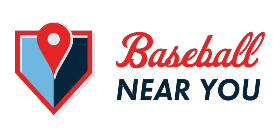How to Run Baseball Tryouts
Written by Zach Kerr
Updated March 25th, 2025
Running a successful baseball tryout can be a challenging task for any coach, but with proper planning and execution, you can find the right players to build a winning team. In this guide, we’ll cover how to run tryouts, broken down by age groups.
Before the Tryouts
First things first, make sure you have the right space and equipment. You’ll need a field or gymnasium to run your tryouts, with enough space for each player to demonstrate their skills. At the very least you’ll need space for hitters and a mound for pitchers. Make sure your players have the following equipment:
- Gloves
- Bats
- Catcher’s gear
- Helmets
While you should be sure to have:
- Baseballs
- Tees
- Nets
- Cones
- Med Kit
It’s also a good idea to have a clipboard and pen to take notes on each player’s performance.
Similar: Starting a Travel Team
Running Tryouts
8-12 Year Olds
For this age group, it’s important to focus on the fundamentals. Start with a warm-up that includes running, stretching, and throwing. Then, run players through drills that assess their throwing, catching, hitting, and baserunning abilities. Use cones or markers to set up stations for each skill and rotate players through.
Look for players who show potential in all areas and have a willingness to learn. Keep in mind that this age group is still developing their skills, so don’t be too hard on them if they make mistakes.
13-15 Year Olds
At this age, players should have a solid foundation in the fundamentals. Start with a similar warm-up to the 8-12 group, but then move on to more advanced drills. Use cones or markers to set up stations for fielding grounders, fly balls, and pop-ups. Have players demonstrate their hitting and baserunning abilities as well.
Look for players who show consistency in all areas and have a good attitude. You may also want to assess their knowledge of the game, such as their ability to make smart plays and read the field.
16-18 Year Olds
For this age group, you’re looking for players who can compete at a high level. Start with a dynamic warm-up that includes running, agility drills, and throwing. Then, move on to more advanced drills that assess their fielding, hitting, and baserunning abilities.
Look for players who show the ability to make quick decisions and execute under pressure. You may also want to assess their physical abilities, such as their speed and arm strength.
After the Tryouts
Once the tryouts are over, it’s time to evaluate each player’s performance. Use the notes you took during the tryouts to assess each player’s strengths and weaknesses. Consider factors such as their skill level, attitude, and potential for improvement. If you’re interested, we offer free pitching charts to measure player’s efficiency.
Ultimately, the decision of who makes the team comes down to the coach’s judgment. Make sure to communicate the results of the tryouts to each player and provide constructive feedback on how they can improve their skills.
Join the club!
Sign up for our newsletter for more articles like this and features updates from our team!


Ready to get started?

